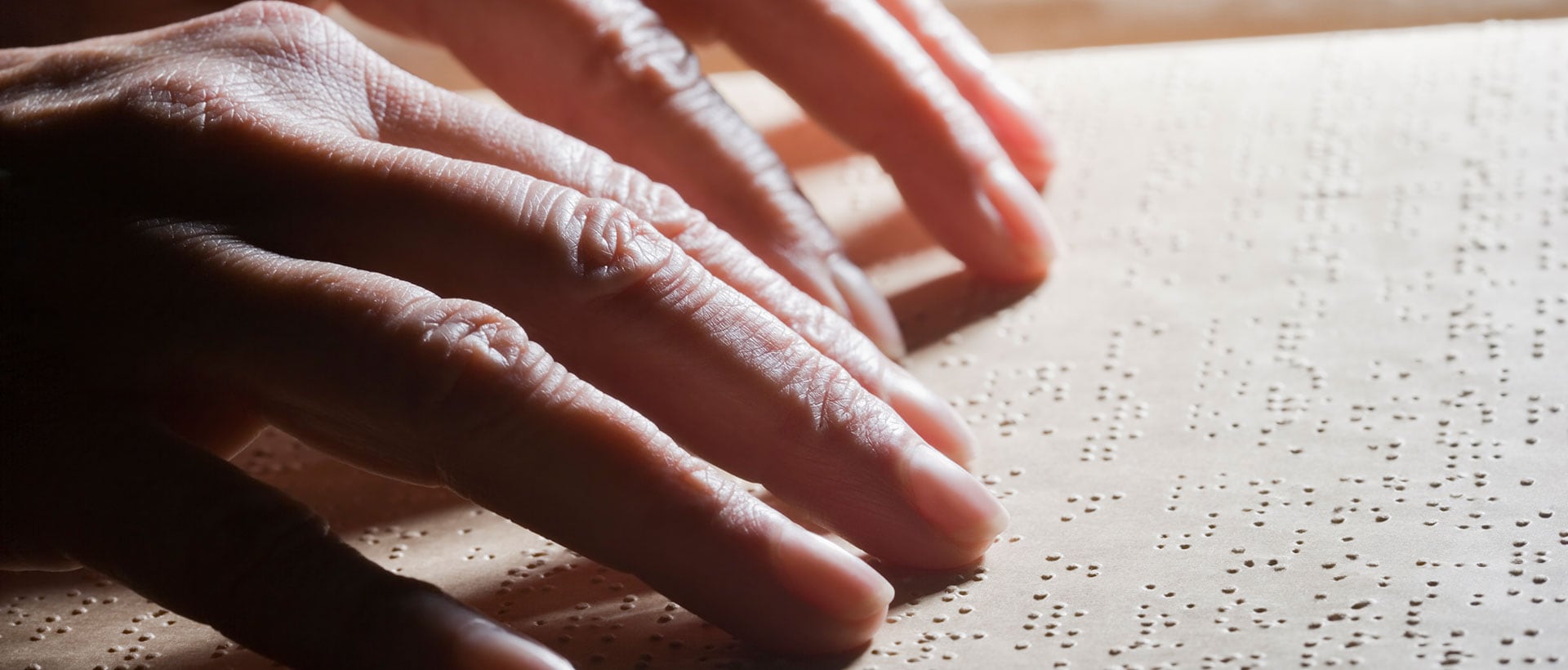The history of braille and how it impacts us today.
You’re sitting down to brunch, and the smiling server hands you a large laminated menu with all the specials and favorites. Then you notice that there are little bumps on it next to or under the names of the menu items. Many sighted people would just dismiss these bumps, knowing that they’re braille, the tactile alphabet for blind people. But I bet not many would take the time in that moment to wonder about how braille came to be, or how to even use it.
The truth is, though, that in those tiny bumps on a menu, textbook, keyboard or countless other places, there’s a beautiful story of how a man–well, two men, actually–had a vision to help blind people read and learn. This alphabet has impacted millions of lives, even our team today at IBVI. In the spirit of Braille Literacy Month, let’s take a look at where it all began.
The TWO pioneers of braille
The inception of braille as we know now actually began with a man named Charles Barbier. He served in Napoleon’s French army in the 1800’s, developing a system called “night writing” after he saw several of his soldiers get killed because they were using lamps to read messages at night. He developed a system similar to modern-day braille, with each braille “cell”–or letter–containing 12 dots (two wide and six tall).
A couple of decades later, Louis Braille, also from France, wanted to modify Barbier’s night writing system to serve more effectively as a communication system for blind people. Barbier’s system was too large, people weren’t able to feel a character with a single touch, and the system of raised printed letters in use at the time was impractical and difficult to produce. Louis Braille had been blind since he was a young boy because of an accident where he stabbed himself with a tool that his father used for producing leather goods.
While attending a school for the blind in Parris, Braille developed a system which only used six dots in each cell (two wide and three tall) to make the letters and symbols smaller and easier to feel. In 1854, France adopted braille as its official communication system for blind people, tragically one year after Braille passed away. In 1860, braille reached the United States through the Missouri School for the Blind.
What braille means now
Over more than 150 years, braille has touched the lives of millions of people who are blind or visually impaired. Even today at IBVI, our employees use old-fashioned (paper) braille as well as braille through technology. Modern technology allows for tools like refreshable braille displays, which brings braille from the 1800s into the future. These refreshable displays look similar to computer keyboards, translating the words on a computer screen to “show” as raised braille letters on a pad. When then screen changes, so does the braille.
As we said before, you can also find braille out in the world almost anywhere there’s text. You can find it on hotel room number signs, on business cards, or even on drive up ATM’s. In some places, you may have to ask for braille versions of paperwork or instructions, but thanks to those two men, braille is everywhere. But is it going to join us in the future?
Is braille a lost art?
Last January, we published a blog post about braille and how it’s not being used as much by younger generations. In fact, of the 62,528 legally blind children who are attending public schools or publicly run programs in the United States, only 8.2 percent of them identify as braille readers. This drop is partially due to the technology of screen readers and voice-to-text technology that are more convenient than braille in certain situations. In addition, the high cost of traditional refreshable braille devices make them difficult to afford for much of the blind population. However, the biggest contributing factor into the drop in braille literacy is largely due to a shortage of qualified braille teachers in the United States. With this being said, low cost refreshable braille displays are now hitting the market. Also, numerous efforts by advocacy organizations are promoting the necessity of braille going forward.
However, braille isn’t just about communication; it’s about literacy. Braille is a tactile representation of the alphabet. If someone knows how to talk, but not how to read and write, they’re limited in their ability to communicate. That’s what makes braille so powerful, even though it may appear to be losing popularity.
For Braille Literacy Month, it’s important to remember not just the importance of braille, but how people who are blind and visually impaired communicate in everyday life. Whether you’re sighted or not, we all play a role in promoting access and inclusion, which is just what Barbier and Braille did.


